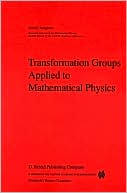

 |

|

Sold Out
Book Categories |
Approach your problems from the right It isn't that they can't see the solution. end and begin with the answers. Then It is that they can't see the problem. one day, perhaps you will find the final question. G.K. Chesterton. The Scandal of Father Brown 'The Point of a Pin'. 'The Hermit Clad in Crane Feathers' in R.van Gulik's The Chinese Maze Murders. Growing specialization and diversification have brought a host of monographs and textbooks on increasingly specialized topics. However, the "tree" of knowledge of mathematics and related fields does not grow only by putting forth new branches. It also happens, quite often in fact, that branches which were thought to be completely disparate are suddenly seen to be related. Further, the kind and level of sophistication of mathematics applied in various sciences has changed drastically in recent years: measure theory is used (non-trivially) in - gional and theoretical economics; algebraic geometry interacts with physics; the Minkowsky lemma, coding theory and the structure of water meet one another in pack- ing and covering theory; quantum fields, crystal defects and mathematical programming profit from homotopy theory; Lie algebras are relevant to filtering; and prediction and electrical engineering can use Stein spaces. And in addition to this there are such new emerging subdisciplines as "completely integrable systems," "chaos, synergetics and large-scale order," which are almost impossible to fit into the existing classification schemes. They draw upon widely different sections of mathematics.
Login|Complaints|Blog|Games|Digital Media|Souls|Obituary|Contact Us|FAQ
CAN'T FIND WHAT YOU'RE LOOKING FOR? CLICK HERE!!! X
 You must be logged in to add to WishlistX
 This item is in your Wish ListX
 This item is in your CollectionTransformation Groups Applied To Mathematical Physics, Vol. 3
X
 This Item is in Your InventoryTransformation Groups Applied To Mathematical Physics, Vol. 3
X
 You must be logged in to review the productsX
 X
 X

Add Transformation Groups Applied To Mathematical Physics, Vol. 3, , Transformation Groups Applied To Mathematical Physics, Vol. 3 to the inventory that you are selling on WonderClubX
 X

Add Transformation Groups Applied To Mathematical Physics, Vol. 3, , Transformation Groups Applied To Mathematical Physics, Vol. 3 to your collection on WonderClub |